Solar power is gaining a strong foothold in the transportation sector. Both private and public transport systems are being developed to replace fossil fuel, conventional transport. It will take some time, but eco-friendly transport using solar energy will be seen on the roads much more than now. Technology is advancing to harness the brilliant heat of the sun, for transport on sea, land and sky. Let’s take a look at the solar powered transportation which is gaining ground swiftly:
Solar powered transportation: Future Concepts, Trends and More
Solar power is dependent on the weather and solar panels are costly now, but the benefit of this renewable energy are many. There are some very interesting transport innovations, some of which are being used and others which are soon going to be seen on roads.
Solar buses
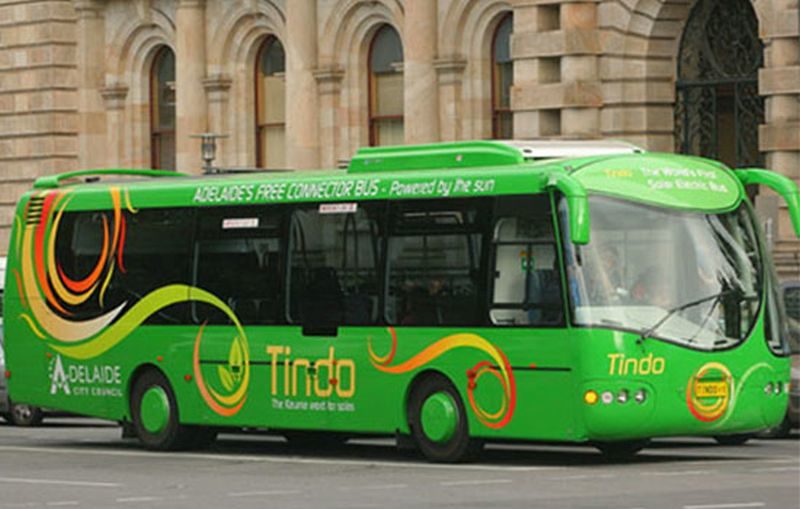 Image Source : cdn-1.au.xmsymphony.com
Image Source : cdn-1.au.xmsymphony.com
The concept of solar powered transportation is geared towards the saving of fossil fuels and one of the best ways to do it is to make public transport solar powered and efficient, thus reducing use of conventional cars while making use of clean energy.
Shanghai introduced electric buses which run on solar energy. The 195 kW panels are not installed on the buses, but have been installed on the bus depot, where the buses are charged as they go about their routes. The depot produces enough electricity to charge 6 buses simultaneously and the annual power generated is approx 20 MWh, which supplies electric power to buses as well as for other functions. Each of the 70 buses runs for 100 to 120 kms every day, consuming about 230 kWh.
In 2013, in Adelaide, the world’s first solar energy buses called the ‘Tindo’ started running. Though the bus does not have solar panels on it, but it is 100% electric, and runs on battery charged by solar power. The bus is charged at Adelaide’s central bus station before it sets out on its routes. On weekdays, it normally travels 200 km before it has to be recharged, but the ingenious regenerative braking system helps to extend the battery life a little.
Out of the many trends of solar powered transportation, one which is gaining a lot of attention and implementation is bus stops which are solar powered. The tech is very simple – all that has to be done is install solar panels on top which would gather energy in the daytime and use the power to light up the bus info boards in the evening/night, as well as promotional panels. This idea has been implemented by the Clear Channel, UK, which used this idea for the Waterloo Bridge bus stop.
There would be huge amount of energy generated if all bus stops had solar panels installed, and maybe this clean energy could be supplied to the grid, besides charging solar power buses.
Project Tejas
 Image Source : hindustantimes.com
Image Source : hindustantimes.com
Naveen Rabelli, who is an automotive engineer from India, has developed a unique mode of solar powered transportation. It is a ‘tuk-tuk’ which has solar panels installed on it. He completed a world tour on this clean energy driven vehicle, beginning his journey in India in February 2016 and completed it in London in September, 2016. He would have finished his trip earlier, but his battery pack died in Paris. Unfortunately, his passport was also stolen in Paris. But he kept going and managed to accomplish his goal.
The tuk-tuk had a bed, passenger seat and a closet for food which people donated, and another solar energy invention of Naveen, the cooker. He traversed 6,200 miles on his tuk-tuk and demonstrated the possibility of these solar vehicles which do not have any emissions for going on incredible journeys around the world, and of course, around town.
Solar Impulse 2
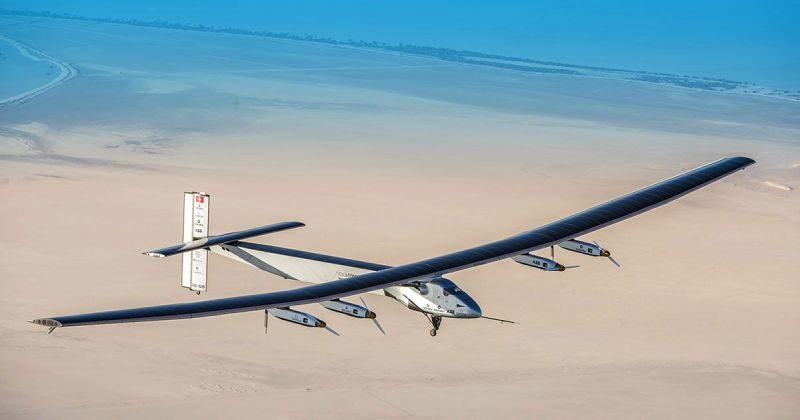 Image Source : d.newsweek.com
Image Source : d.newsweek.com
The Solar Impulse 2 is a notable achievement and demonstrates the future of solar powered transportation. It is a plane which completed world circumnavigation in 505 days. The solar energy fired plane completed 26,000 miles and was piloted by the Swiss engineers Andre Borchberg and Bertrand Piccard. They flew from Abu Dhabi with 17,000 panels and weighed 2.4 tons with a wingspan of 72m. The plane flew over Atlantic and Pacific oceans and spent approx 23 days in air.
Solar Impulse 2 flew day and night, and it had 12 years of feasibility studies, design and concept developments. There were more than 100 advisors, suppliers, 80 tech partners and 50 engineers.
However, experts say that solar powered planes are just a pipedream in the commercial sector, though companies like Airbus and Boeing are developing the technology. There are many technical challenges which have to be overcome for such planes to fly safely even in inclement weather. But there is hope yet, only the technology needs to be in place.
PlanetSolar
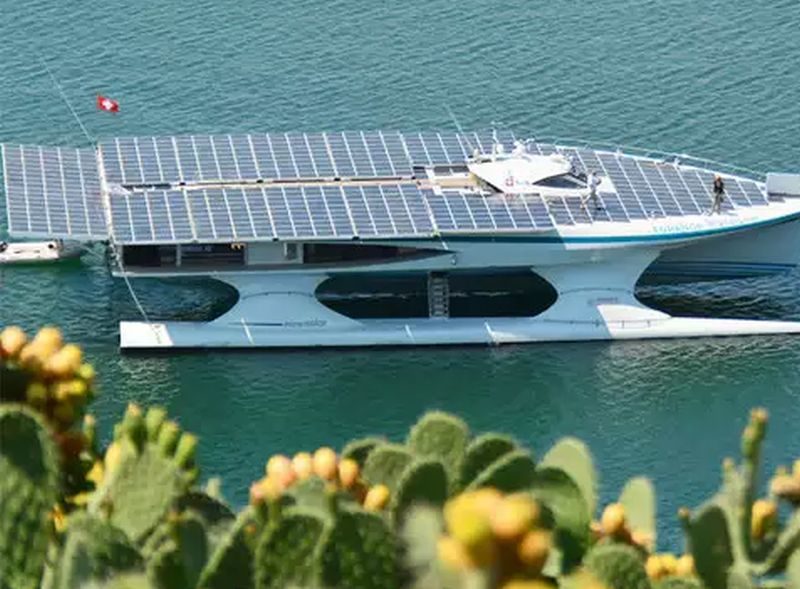 Image Source : img.etimg.com
Image Source : img.etimg.com
This is the biggest solar boat in the world. It derives all the energy it needs solely from 29, 124 PV cells. The energy generated is more than adequate, as it allows the boat to keep going even in complete darkness for upto 72 years. The trends of solar powered transportation is towards eliminating hybrid systems altogether, which can be seen in this boat. The PlanetSolar can accommodate about 60 people and meet all their electricity needs with solar electricity. It sails at a speed of 26 km/h, with an average speed of 10 km/h.
The Elf
 Image Source : digital.hammacher.com
Image Source : digital.hammacher.com
This remarkable example of solar energy vehicle shows the future of solar powered transportation. It is a cross between a bicycle, motorcycle and car. The Elf is known as ‘Velmobile’ too, and is a hybrid which can run on electricity, solar power as well as human power. Built after a successful campaign on Kickstarter which raised 225,785 dollars, the driver of this crossover vehicle can either pedal, or use the motor which runs on 480W lithium battery. It can be charged throughout the day with the help of the solar roof, or in two hours from an electric point.
The Elf is considered as a cycle under federal law in America. It runs at the speed of 30 mph for about 48 miles when it is charged fully. The frame is eco friendly too, made out of recycled aluminum and weighs 72.5 kg approx. It can also hold upto 158.75 kg in the rear compartment. The design is minimalist which can be assembled cheaply and quickly.
Cars powered by solar energy
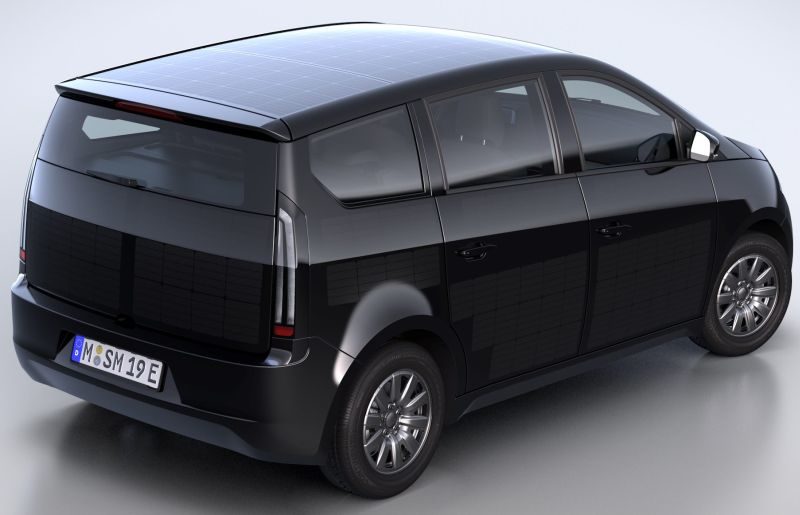 Image Source : electrek.co
Image Source : electrek.co
The concept of solar powered transportation is being extended to cars as well. Though there are some hybrids which run on solar power, there is no car which is entirely powered by solar energy. But due to the demand for such a car by environmentally conscious customers, companies are racing to produce the first car which will be a success. Low performance and intermittency are the main challenges which automakers are facing, but the technology is evolving.
Sono, a car company which is based in Europe, is planning to launch the first ever completely solar car in the year 2019. Lightyear One is another company which won the Climate Change Innovator Award for its solar car. The car can charge itself, and can incredibly, be driven for months together without being charged! The 250-500 mile range car is also expected to hit the roads by 2019 too.
It is difficult to power cars with solar power as cars need a lot of energy, and traverse between shadow and sunlight, stop and start many times during the day or night. The small surface area on the roof is also not enough to install the number of solar panels which are required to produce enough power for the cars.
Gamera
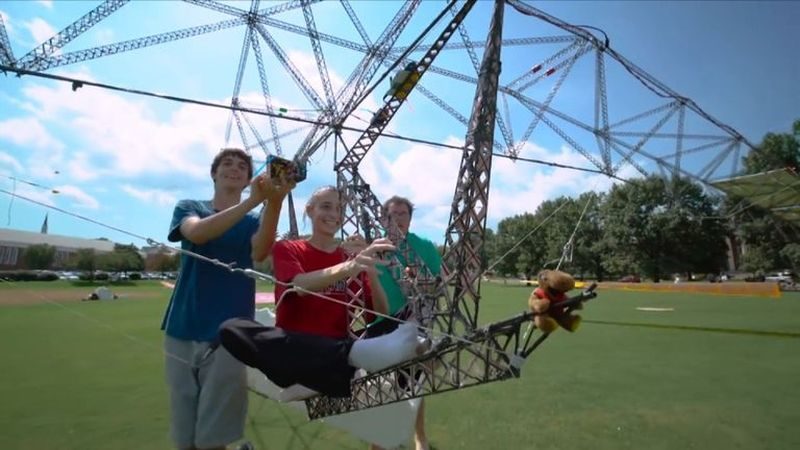 Image Source : e3.365dm.com
Image Source : e3.365dm.com
Maryland University students of Engineering designed a helicopter which lifted off successfully with one passenger in its cockpit, powered only by solar energy. It stayed airborne for about 9 seconds and levitated 0.3048 m above ground. Helicopters like this one may be used for short journeys.
Solar Trains
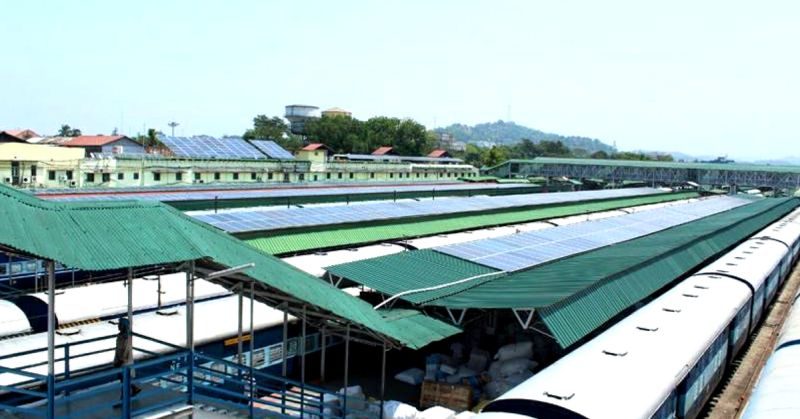 Image Source : thebetterindia.com
Image Source : thebetterindia.com
Solar trains have made more headway than any other kind of solar powered transportation. The first fully solar train ran in December of 2017 in Australia’s New South Wales. The train has solar panels installed on the roof and is charged at the stations it stops to renew the charge. The train runs for a distance of 1.9 miles of track which was revived just for this train, between two central parts of the city for tourists and residents.
The train earlier had diesel engines which were replaced with batteries and electric motor which acts as backup during emergency. The battery is 77 kWH and has enough charge for about 12-15 hours on one single charge.
The world over, many countries including India and UK, are making progress in the technology to help trains run with solar energy. One of the methods which is gaining popularity is to use the electricity flowing directly from the solar panels to the train tracks which are electrified. Solar trains could make a huge difference in public transportation using clean and green energy.
In India, there are trains with solar panels on the roofs, and in 2017, Guwahati, a city in the North-eastern part of India, became the first station in the entire country to be 100% solar energy powered. The government there is working to adopt PV cells in 8,500 stations in the near future.
Initiatives like this reduce the use of power from the grid, which is already under pressure and also increase financial benefits.
In UK too, in 2019, a railway line which is completely solar powered was launched, in Hampshire, marking a new beginning for solar powered transportation in UK. This was possible after many years of collaboration with Network Rail and 10:10, UK’s Community Energy South. It all started with a study done by Imperial College London in 2017. The name of the study was ‘Riding Sunbeams’, which also happens to be the name of the railway line. The study revealed that generating solar energy from DC traction power system would minimize the reliance on the grid and also save 4.5 million pounds every year.
Riding Sunbeams brainchild, the solar line can bypass the grid completely and instead, draw power from the hundred solar panels.
Powering trains with solar energy is comparatively easier, as they travel on fixed routes, and can be recharged between stops or at every stop. Countries should gradually make the transition to solar power from grid power in trains which would reduce the pressure on the grid considerably.
Another idea for solar powered transportation in the railway sector is attaching the solar panels to the railway sleepers, which has the potential of trains running on long routes at low costs. Companies such as Greenrail and Bankset Group have taken the initiative, and their target is to implement this new technology to European and other international railway networks, such as Italy, Germany, Switzerland and France. If the test trials in these countries are a success, then the tech would be used in a whopping 165 countries all over the world.
Solar scooters and bikes
 Image Source : velometro.com
Image Source : velometro.com
Though solar trains will take some time to be a common feature, solar scooters and trains are much more easily available. There are even events where competitors pit their solar e-bikes against each other over long distances, such as the one which starts in France and ends in China, completing a distance of 13,000 km.
One of these bikes is the Veemo, a closed electric assist bike with 80 watt panel installed on the roof. The Daymak Photon is another affordable option. It is a scooter which has solar panels on its base. The Daymak is constantly charging itself even when it is not being used. It comes fitted with speakers and USB port to charge your phone or to play music. The scooter is perfect for short distance journeys, and is one of the best examples of solar powered transportation.
Solar roads
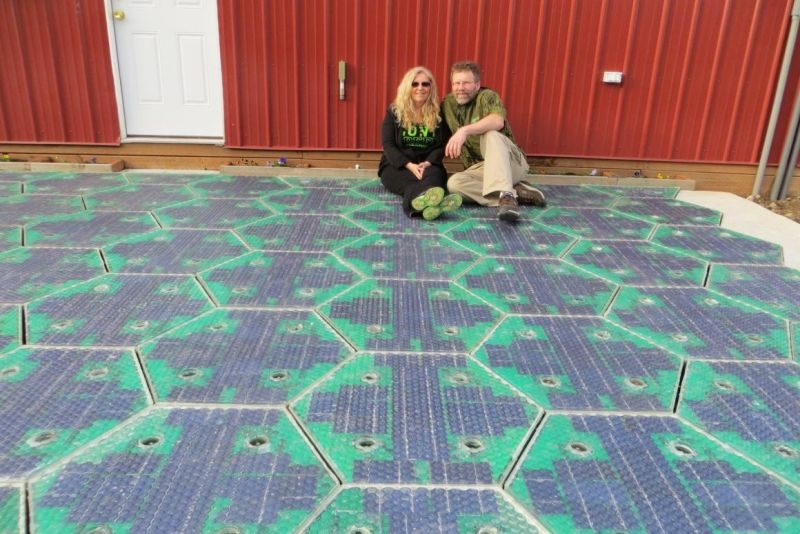 Image Source : assets.newatlas.com
Image Source : assets.newatlas.com
Not only transportation, but even roads may not be what they are now today. Julie and Scott Brusaw have been experimenting for over ten years trying to build solar panels which could be installed on roads. Their company called Solar Roadways have government support and they are building solar panels which can withstand upto 250,000 pounds of pressure. The panels are equipped with heating panels to enhance road safety in winter, as well as lights which can notify drivers of accidents down the road. But the cost to cover the entire roadways of US with these panels is tremendous, estimated at 56 trillion dollars. So maybe it will take some time to see the light of day.
Solar power is one of the most popularly researched and implemented renewable energies. As natural fuels are decreasing day by day, and pollution increasing, solar power has to be one of the solutions to provide green energy.


